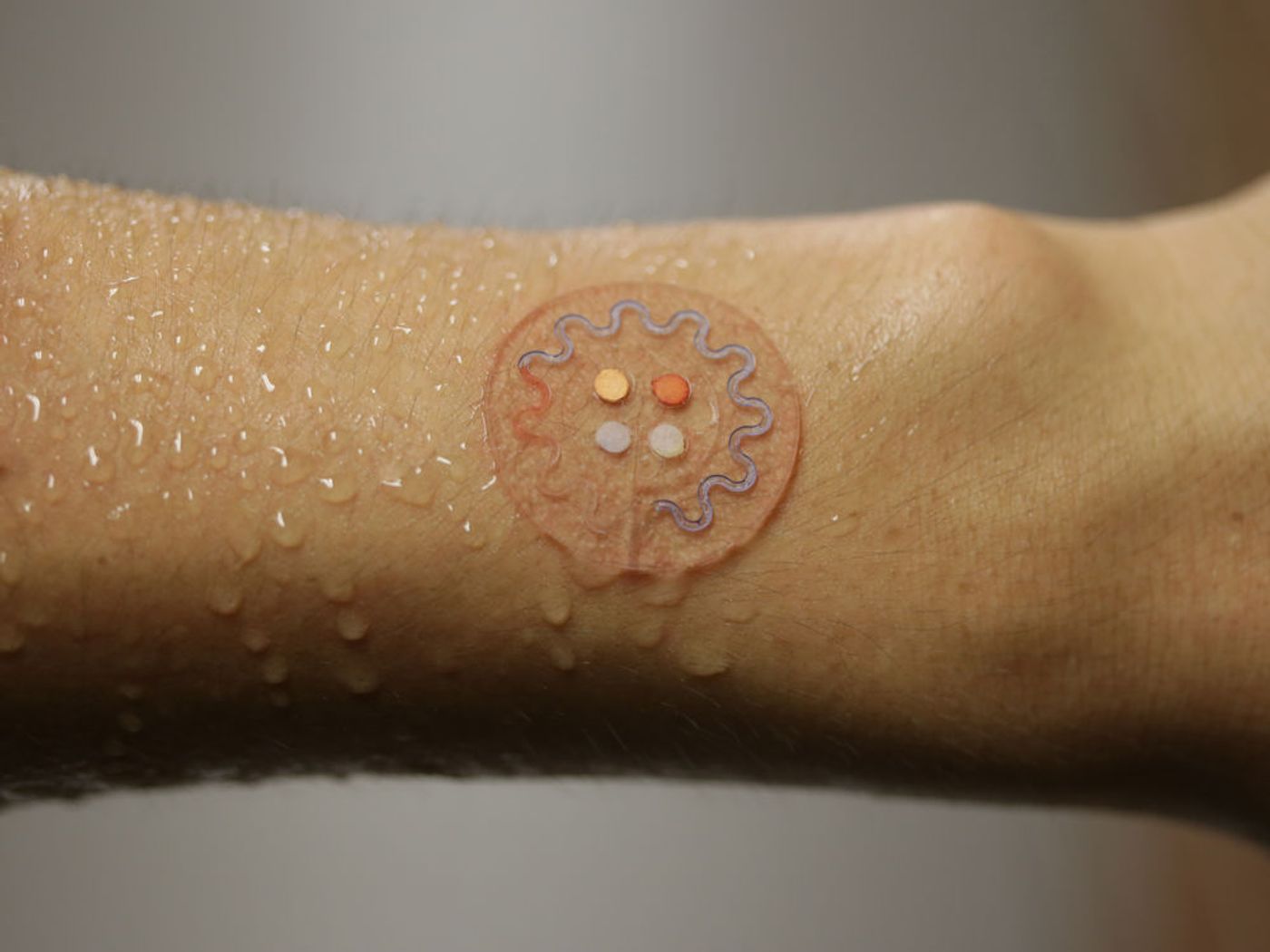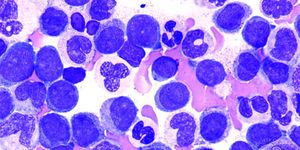Wearable sensors are the rage, and it is a race to create smaller, faster, and more accurate devices. To this end, engineers at the University of Illinois at Urbana-Champaign are one-upping the current wearable headband sensor with a
flexible stick-on patch that tells wears when they’re dehydrated and should replenish.

We usually do our best to hide our sweating, but chemicals in perspirations can offer important clues about our health. Importantly, levels of sodium, potassium, glucose, and lactate, along with pH and rate of sweat, all converge to signal the body’s hydration levels. The problem is that we don’t naturally know how to analyze these changes very well. This can lead to severe dehydration.
With the stick-on device, hydration is calculated for the user. The device sticks on to skin and pulls in sweat for real-time analysis. It has 4 circles that contain enzymes to react with the body’s sweat. The measurements then reveal whether liquid replenishment is necessary.
In a real-life field-testing, researchers put the sensors on volunteers bicyclists riding in the El Tour de Tucson in Arizona. The sensors performed just well in this group as well as in a group of indoor bicyclists. Each device works for up to 6 hours each wear, depending on the sweat rate of the wearer.
But while this sensor has the advantage of being discreet, small, and disposable, it currently lacks a user-friendly app to communicate results with the wearer. And this part is just as important as the device itself, as without meaningful data communication, the wearer may not benefit from the sensor at all.
So far, the authors hinted that the device is garnering special interests from military groups. “The devices could be used in athletic and military training to gain insight into critical electrolyte loss, thereby guiding earlier supplementation before symptomatic cramping and “hitting the wall” points in time at which appropriate preventative treatment is no longer effective,” the team wrote in their paper.
Other special interests groups who are, unsurprisingly, keen on such wearable sweat device include sports beverage companies.
Additional sources:
Popular Science









